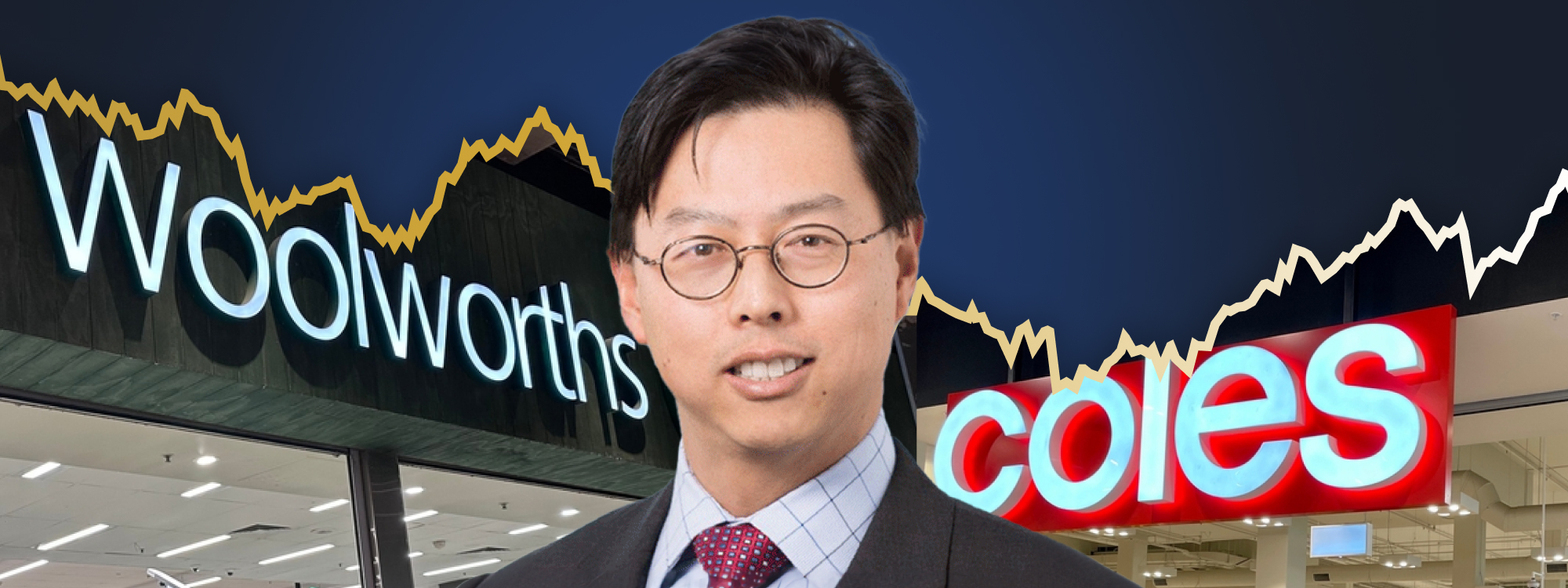Woolworths and Coles: Strong FY24 results with "stable growth at cheap valuations"
Australia’s largest supermarkets – Woolworths (ASX: WOW) and Coles (ASX: COL) – have reported resilient numbers for FY24, underpinned by strong sales growth, effective cost control and improved inventory management.
Woolworths shares have recovered from a 15% drawdown since its February half-year result, which missed analyst expectations and flagged a hefty $1.5 billion impairment of its New Zealand Food business.
Similarly, Coles shares are trading at levels not seen since August 2022 amid a major turnaround. It was just twelve months ago that its stores were being hit on all fronts – from theft, supply chain challenges, shrinkage and spoilage.
Patient shareholders have been rewarded for their loyalty. Woolworths has declared a special dividend of 40c/share, while Coles has increased its full-year dividend by 3%.
As the retail sector narrative shifts towards effective cost management, lower inflation, and anticipated rate cuts, I sought insights from Tyndall AM's Craig Young regarding today's results.
Woolworths FY24 Key Results
- Sales +3.7% to $67.9 billion
- NPAT (ex-items) -3% to $1.71 billion
- EPS (ex-items) -3.4% to 140.3 cents per share
- Final dividend -1.7% to 57c/share plus special dividend of 40c/share
- Total dividend for FY24 +38.5% to 144c/share
- Outlook – Australian food sales for the first 8 weeks of FY25 are +3% year-on-year, New Zealand food sales are +1.5% and Big W sales are broadly flat
Coles FY24 Key Results
- Group revenue +3.2% to $43.5 billion
- Group EBITDA +0.2% to $3.64 billion
-
Underlying NPAT +4.1% to $1.21 billion
- Total dividend for FY24 +3% to 68 cps
- Outlook – Supermarket sales are up 3.7% in the first 8 weeks of FY25, with positive volume growth and increasing momentum

1. In one sentence, what were the key takeaways from these results?
A better cost outcome was clear. Both supermarkets have really got on top of cost reductions, especially compared to the poor cost outcomes a year ago.
2. Were there any major surprises in these results that you think investors should be aware of?
While the operational earnings were better than expected, interest-related costs, such as additional lease expenses, were a little high. I think that's something that the market would not have been expecting and an area of disappointment.
In terms of Woolworths' special dividend, their balance sheet has always been in good shape. Most investors expected some form of capital management after they sold their Endeavour stake. It was really a question of timing. Today's special dividend came a little bit earlier than I expected.
3. Would you buy, hold or sell WOW and COL on the back of these results?
- Woolworths rating: BUY
- Coles rating: BUY
Both Woolworths and Coles are looking relatively cheap compared to other sectors and stocks. For instance, a peer like Wesfarmers looks very expensive. While some of the discretionary retailers have risen up on very high expectations of future growth.
Woolworths and Coles continue to be really strong businesses, with significant of advantages over their competitors. They're also very defensive business. You can bet on food sales being very consistent year-on-year.
In terms of investment appeal, there's little difference between the two at this point in time. They're both delivering good profits and cash flow, and their balance sheets are robust. Collectively, the two appear more attractive than many other retail alternatives.
4. Are there any risks investors should be aware of?
Woolworths and Coles are both really good businesses operating in stable markets, carrying less risk than most companies.
If interest rates or inflation remain high for a long time, these businesses will perform quite well or better than other companies.
The risks these two businesses face would have to be self-inflicted. For example, if they make a poor acquisition, invest in technology or something that doesn't work out. However. both management teams are experienced and there's a great deal of depth within both organisations.
5. From 1 to 5, where 1 is cheap and 5 is expensive, how much value are you seeing on the ASX today?
There are pockets of the market that are cheap and expensive. Banks, for instance, are at the extreme end of expensive. I would rate CBA (ASX: CBA) as a clear 5 and the other banks as a 4. In contrast, supermarkets are closer to the cheap end, with both Woolworths and Coles around a 2. Some discretionary retailers, like Wesfarmers (ASX: WES), are rated a 5 and JB Hi-Fi (ASX: JBH) is moving in that direction, currently a 4.
These pricing differentials can persist for quite a while, sometimes even years, but they eventually tend to revert to more reasonable levels.
3 topics
5 stocks mentioned


